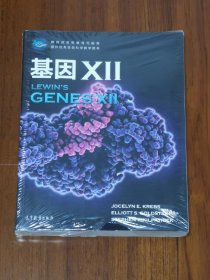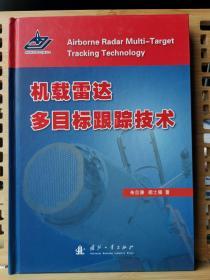
经典力学(第5版)(英文版)9787519226220
正版图书,可开发票,请放心购买。
¥ 67.24 7.9折 ¥ 85 全新
库存2件
广东广州
认证卖家担保交易快速发货售后保障
作者(英)T.W.B.基布尔,(英)F.H.波克夏
出版社北京世图
ISBN9787519226220
出版时间2017-02
装帧其他
开本其他
定价85元
货号30127907
上书时间2024-07-29
- 店主推荐
- 最新上架
商品详情
- 品相描述:全新
- 商品描述
-
作者简介
T.W.B.基布尔,伦敦帝国理工学院理论物理系自杀研究员,咋量子场论、高能粒子物理及天文学的交叉领域从事多年研究工作。
目录
Preface
Useful Constants and Units
List of Symbols
1. Introduction
1.1 Space and Time
1.2 Newton's Laws
1.3 The Concepts of Mass and Force
1.4 External Forces
1.5 Summary
2. Linear Motion
2.1 Conservative Forces; Conservation of Energy
2.2 Motion near Equilibrium; the Harmonic Oscillator
2.3 Complex Representation
2.4 The Law of Conservation of Energy
2.5 The Damped Oscillator
2.6 Oscillator under Simple Periodic Force
2.7 General Periodic Force
2.8 Impulsive Forces; the Green's Function Method
2.9 Collision Problems
2.10 Summary
3. Energy and Angular Momentum
3.1 Energy; Conservative Forces
3.2 Projectiles
3.3 Moments; Angular Momentum
3.4 Central Forces; Conservation of Angular Momentum
3.5 Polar Co-ordinates
3.6 The Calculus of Variations
3.7 Hamilton's Principle; Lagrange's Equations
3.8 Summary
4. Central Conservative Forces
4.1 The Isotropic Harmonic Oscillator
4.2 The Conservation Laws
4.3 The Inverse Square Law
4.4 Orbits
4.5 Scattering Cross-sections
4.6 Mean Free Path
4.7 Rutherford Scattering
4.8 Summary
5. Rotating Frames
5.1 Angular Velocity; Rate of Change of a Vector
5.2 Particle in a Uniform Magnetic Field
5.3 Acceleration; Apparent Gravity
5.4 Coriolis Force
5.5 Larmor Effect
5.6 Angular Momentum and the Larmor Effect
5.7 Summary
6. Potential Theory
6.1 Gravitational and Electrostatic Potentials
6.2 The Dipole and Quadrupole
6.3 Spherical Charge Distributions
6.4 Expansion of Potential at Large Distances
6.5 The Shape of the Earth
6.6 The Tides
6.7 The Field Equations
6.8 Summary
7. The Two-Body Problem
7.1 Centre-of-mass and Relative Co-ordinates
7.2 The Centre-of-mass Frame
7.3 Elastic Collisions
7.4 CM and Lab Cross-sections
7.5 Summary
8. Many-Body Systems
8.1 Momentum; Centre-of-mass Motion
8.2 Angular Momentum; Central Internal Forces
8.3 The Earth-Moon System
8.4 Energy; Conservative Forces
8.5 Lagrange's Equations
8.6 Summary
9. Rigid Bodies
9.1 Basic Principles
9.2 Rotation about an Axis
9.3 Perpendicular Components of Angular Momentum
9.4 Principal Axes of Inertia
9.5 Calculation of Moments of Inertia
9.6 Effect of a Small Force on the Axis
9.7 Instantaneous Angular Velocity
9.8 Rotation about a Principal Axis
9.9 Euler's Angles
9.10 Summary
10. Lagrangian Mechanics
10.1 Generalized Co-ordinates; Holonomic Systems
10.2 Lagrange's Equations
10.3 Precession of a Symmetric Top
10.4 Pendulum Constrained to Rotate about an Axis
10.5 Charged Particle in an Electromagnetic Field
10.6 The Stretched String
10.7 Summary
11. Small Oscillations and Normal Modes
11.1 Orthogonal Co-ordinates
11.2 Equations of Motion for Small Oscillations
11.3 Normal Modes
11.4 Coupled Oscillators
11.5 Oscillations of Particles on a String
11.6 Normal Modes of a Stretched String
11.7 Summary
12. Hamiltonian Mechanics
12.1 Hamilton's Equations
12.2 Conservation of Energy
12.3 Ignorable Co-ordinates
12.4 General Motion of the Symmetric Top
12.5 Liouville's Theorem
12.6 Symmetries and Conservation Laws
12.7 Galilean Transformations
12.8 Summary
13. Dynamical Systems and Their Geometry
13.1 Phase Space and Phase Portraits
13.2 First-order Systems -- the Phase Line (n = 1)
13.3 Second-order Systems -- the Phase Plane (n -- 2)
13.4 Prey-Predator, Competing-species Systems and War
13.5 Limit Cycles
13.6 Systems of Third (and Higher) Order
13.7 Sensitivity to Initial Conditions and Predictability
13.8 Summary
14. Order and Chaos in Hamiltonian Systems
14.1 Integrability
14.2 Surfaces of Section
14.3 Action/Angle Variables
14.4 Some Hamiltonian Systems which Exhibit Chaos
14.5 Slow Change of Parameters -- Adiabatic Invariance
14.6 Near-integrable Systems
14.7 Summary
Appendix A. Vectors
A.1 Definitions and Elementary Properties
A.2 The Scalar Product
A.3 The Vector Product
A.4 Differentiation and Integration of Vectors
A.5 Gradient, Divergence and Curl
A.6 Integral Theorems
A.7 Electromagnetic Potentials
A.8 Curvilinear Co-ordinates
A.9 Tensors
A.10 Eigenvalues; Diagonalization of a Symmetric Tensor
Appendix B. Conics
B.1 Cartesian Form
B.2 Polar Form
Appendix C. Phase Plane Analysis near Critical Points
C.1 Linear Systems and their Classification
C.2 Almost Linear Systems
C.3 Systems of Third (and Higher) Order
Appendix D. Discrete Dynamical Systems -- Maps
D.1 One-dimensional Maps
D.2 Two-dimensional Maps
D.3 Twist Maps and Torus Breakdown
Answers to Problems
Bibliography
Index
内容摘要
T.W.B.基布尔、F.H.波克夏著的《经典力学(第5版)(英文版)》是英国帝国理工学院物理系及应用数学系的教材,内容精炼,各章有习题,书后附有答案。本书分为14章,一至五章介绍单粒子的基础力学知识,第六章讲述势能理论,多粒子体系在第七、
八章中进行了讨论,第九章介绍了刚体。应用范围颇广的拉格朗日方法虽在前九章中有所涉及,但在第十
、十一章中才进行了完整的论述,十二章主要讨论了哈密顿力学,强调了对称和守恒定律的关系,十三、
十四章介绍了连续动力系统的几何描述。
— 没有更多了 —





















以下为对购买帮助不大的评价